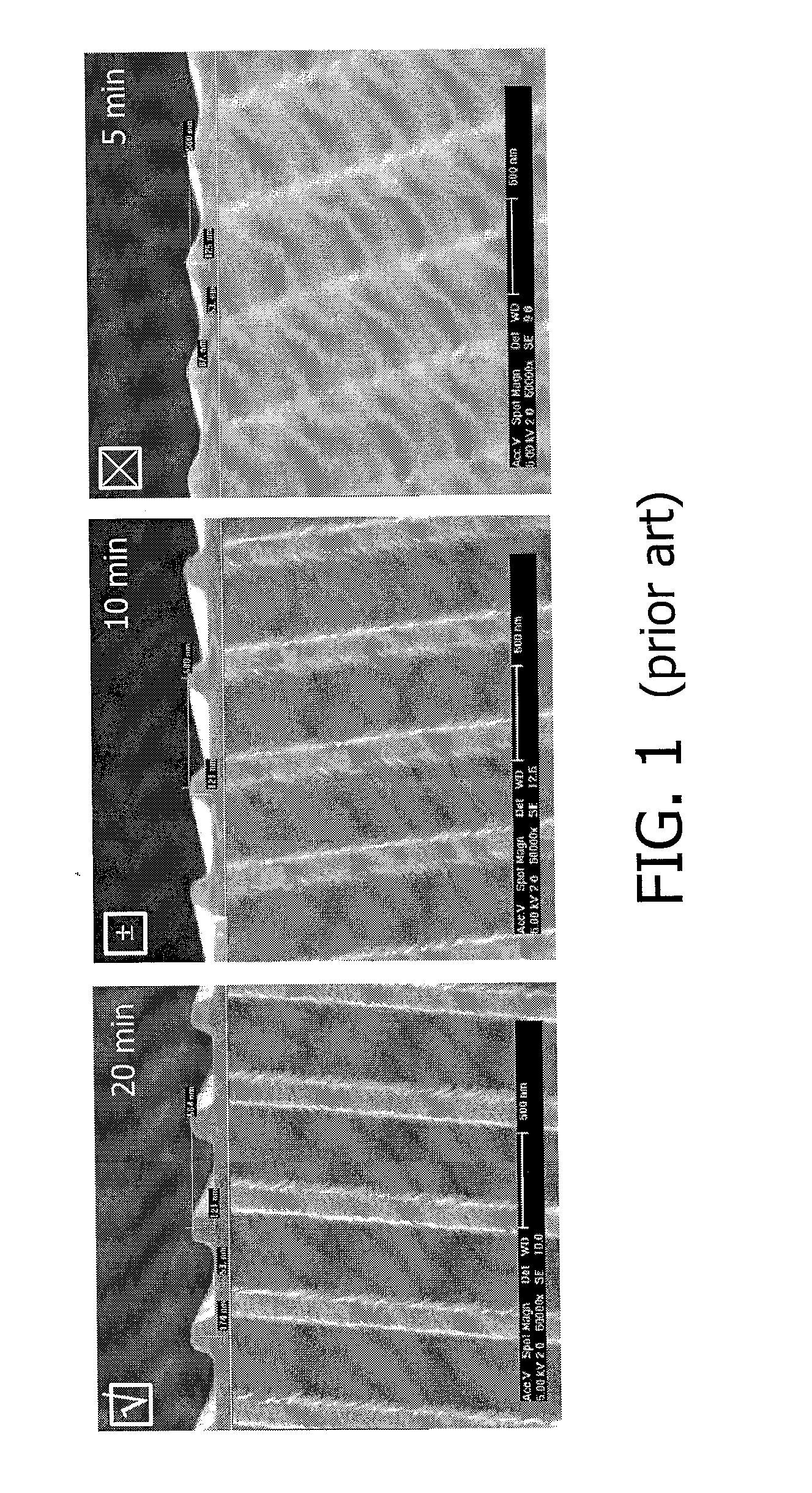Aqueous curable imprintable medium and patterned layer forming method
a curable imprintable medium and patterned layer technology, applied in the direction of duplicating/marking methods, decorative arts, nanotechnology, etc., can solve the problems of limited shelf life of curable solutions, difficult to achieve the effect of reproducibility, and large time-consuming of curing reactions on substrates, etc., to improve the layer-forming characteristics of medium, improve the miscibility of the components of the medium, and improve the solubility of known photo-acid generators
- Summary
- Abstract
- Description
- Claims
- Application Information
AI Technical Summary
Benefits of technology
Problems solved by technology
Method used
Image
Examples
example 1
[0046]An aqueous curable medium was formed by mixing the following components:
[0047]40 wt % g TMOS
[0048]50 wt % g MTMS
[0049]9 wt % g water
[0050]<1 wt % PGMEA
[0051]<0.2% PAG121
[0052]The above mixture was deposited by means of spin-coating on a polysilicon wafer, and subsequently imprinted with a PDMS stamp. The mixture and stamp were subsequently exposed to UV light for 6 minutes at 1 mW / cm2, after which the stamp was removed.
example 2
[0053]An aqueous curable medium was formed by mixing the following components:
[0054]45 wt % TEOS
[0055]45 wt % MTES
[0056]9 wt % water
[0057]<1 wt % PGMEA
[0058]<0.2% PAG121
[0059]The above mixture was deposited by means of spin-coating on a polysilicon wafer, and subsequently imprinted with a PDMS stamp. The mixture and stamp were subsequently exposed to UV light for 6 minutes at 1 mW / cm2, after which the stamp was removed.
example 3
[0060]The same mixture as used in example 1 was used. The above mixture was deposited by means of spin-coating on a polysilicon wafer, and subsequently irradiated with UV light for 2.5 minutes at 1 mW / cm2. The irradiated mixture was imprinted with a PDMS stamp for another 2 minutes, after which the stamp was removed.
PUM
| Property | Measurement | Unit |
|---|---|---|
| Shrinkage | aaaaa | aaaaa |
| Luminescence | aaaaa | aaaaa |
Abstract
Description
Claims
Application Information
 Login to View More
Login to View More - R&D
- Intellectual Property
- Life Sciences
- Materials
- Tech Scout
- Unparalleled Data Quality
- Higher Quality Content
- 60% Fewer Hallucinations
Browse by: Latest US Patents, China's latest patents, Technical Efficacy Thesaurus, Application Domain, Technology Topic, Popular Technical Reports.
© 2025 PatSnap. All rights reserved.Legal|Privacy policy|Modern Slavery Act Transparency Statement|Sitemap|About US| Contact US: help@patsnap.com



